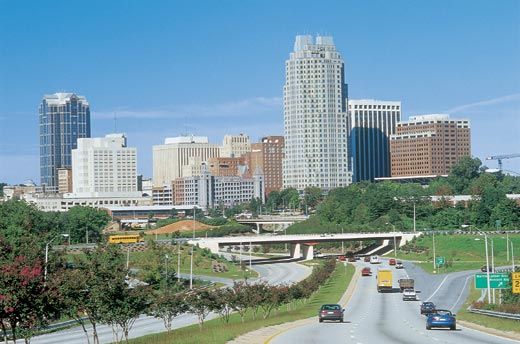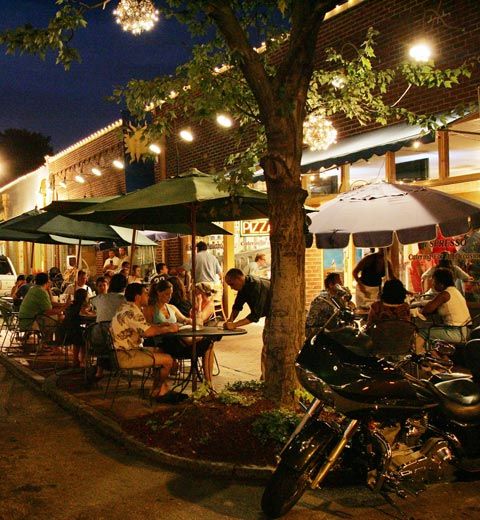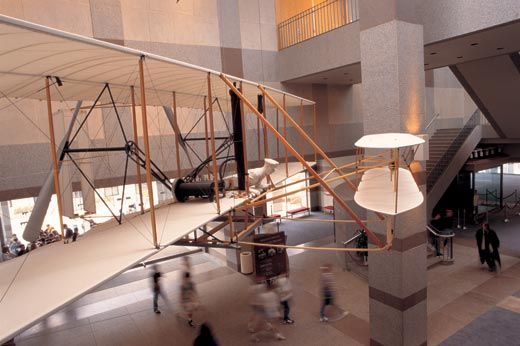Raleigh, North Carolina
Population: 356,321 (2006 estimate)
Percentage of retirees: 7.3% in 2006
Cost of living index: Average
Public libraries: 26 within 15 miles
Public transportation: CAT, Wolfline, TTA bus systems all serve Raleigh and vicinities.
Access to airports: Raleigh Durham International Airport. Ground transportation provided by taxis and TTA shuttle bus.
Tax breaks: For retirees in North Carolina, Social Security is exempt. At least $4,000 in exclusions for federal, state and local pensions (depending on dates and length of service); up to $2,000 exemption for qualified private pensions, including IRAs. Out-of-state government pensions also qualify for the $4,000 exemption. Taxable income also includes income derived from gaming in North Carolina.
Number of museums: 11
Number of cinemas: 14
Cultural Highlights: Major state museums and performing arts groups located here.
Access to Healthcare: Good, with strong satellite hospitals operated by Duke and the University of North Carolina.
Climate: Warm summers and cool winters, with ranges that reflect the national average.
Annual precipitation: 46 inches
Nearby Attractions: Durham and Chapel Hill within an hour's drive; Wilmington Beach 2 hours' drive and the Blue Ridge Mountains three hours.
In the Know: "Raleigh is much larger than a single university town; it's a hub. This whole area is Raleigh, Cary, Chapel Hill and Durham. You have tremendous cultural programs whether it's art, music, theater, ballet or opera. They're all here. There are just a lot of reasons to live here."
-Dr. Bob Barnhardt, dean emeritus at North Carolina State University
North Carolina's capital and suburbs boast the official state theater, symphony, ballet company and opera, as well as three major state museums, all admission-free. Home of North Carolina State University, Greater Raleigh has the added advantage of being the eastern anchor of the "Research Triangle," which includes Durham and Duke University and Chapel Hill and the University of North Carolina, cities with their own rich cultural offerings.
Like many old downtowns, Raleigh's is in the process of revitalization, and dilapidated areas like the warehouse district are targeted to become attractive new residential/nightlife centers in the near future. In the meantime, Fayette and Glenwood Streets are up and running, with plenty of retail and restaurant options.
In the center of town stand the North Carolina Museum of Natural Sciences (billed as one of the best in the country) and the North Carolina Museum of History. Many of the city's performing arts venues and an open studio/gallery facility called Artspace are within the general area, and two historic colleges—Shaw College, the South's oldest historically black college, and Peace College, for women—flank the north and south ends of town.
The great behemoth here, NC State, lies several miles to the west, surrounded by the usual college contingent of bars, cafés and restaurants. Northwest of the campus, the North Carolina Museum of Art features a fine collection of Old Masters and traveling exhibits. In summer, Museum Park is the venue for outdoor performances and films.
The city is proud of its green spaces, and 40 miles of greenway trails wander through downtown and suburban parkland. Greater Raleigh's upscale Cary suburb, to the west of town, has received a lot of national attention for its charm and livability.
Planning Your Next Trip?
Explore great travel deals
Smithsonian magazine participates in affiliate link advertising programs. If you purchase an item through these links, we receive a commission.



